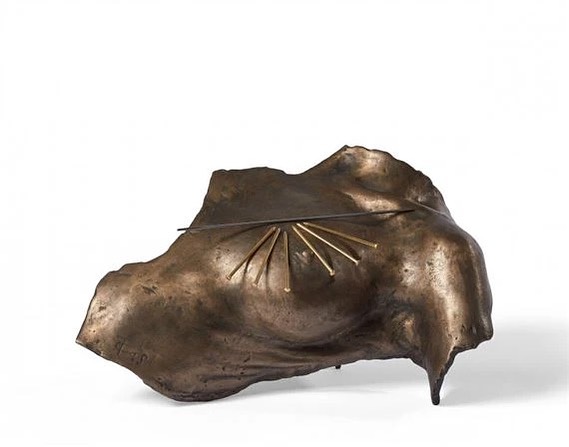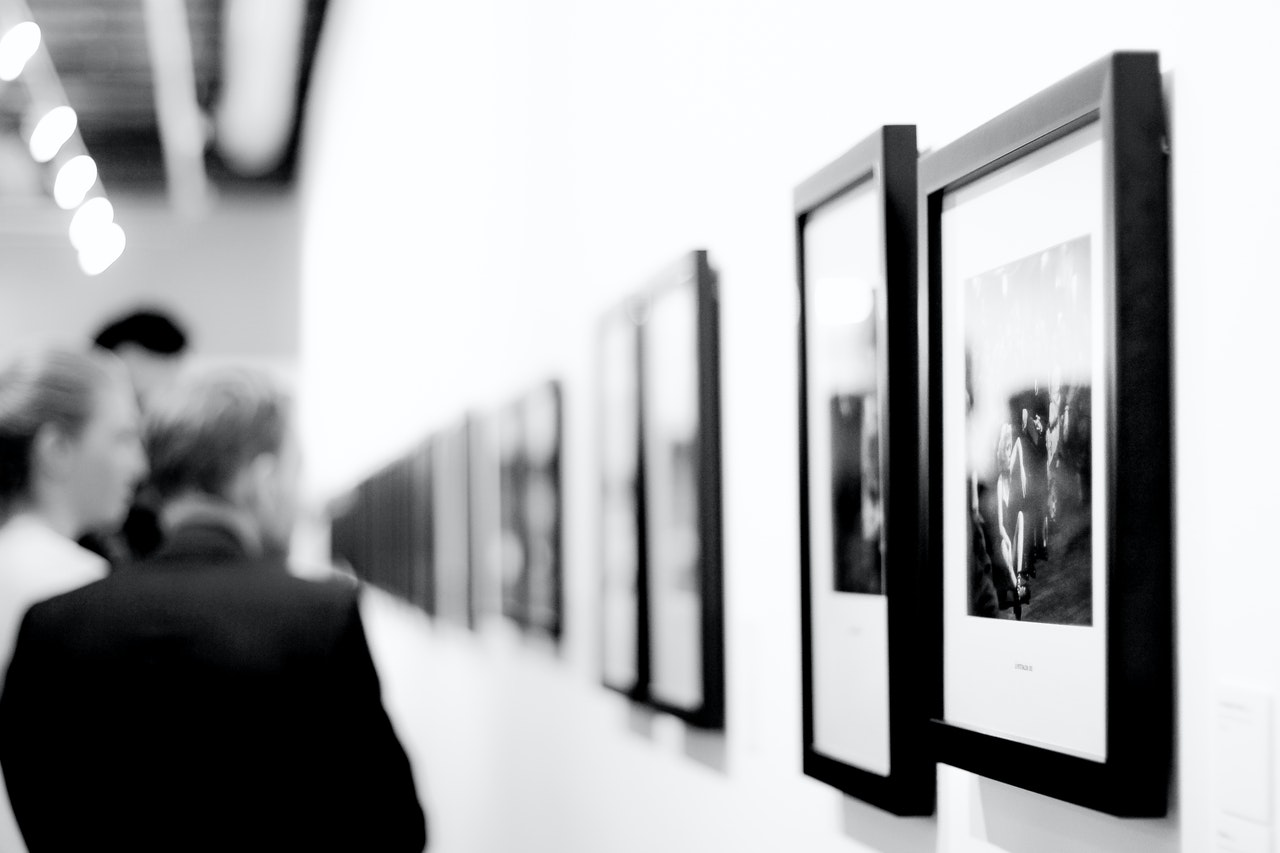TAKIS
Artist Bio +-
Panayiotis Vassilakis, known as TAKIS, is one of the most prominent personalities of both international and greek art scenes. A pioneer of kinetic art, he unfurled his talent after the end of World War II, and he asserted himself by offering a different approach to kinetic art. Self-taught artist by conviction, he managed to create an inextricable link between art and science by combining elements of nature and physics in his sculpturing. Takis, as a “tireless worker of the magnetic fields …” continues to this date to experiment and create kinetic works of art that have inspired painters, sculptors and poets of his generation, as well as his contemporaries.
He is born in Athens in 1925. His childhood and adolescence are marked by successive wars from which Greece suffered, such as the German and Italian occupation and the Civil War. The financial prosperity of his family had been hit already since 1922, during the Asia Minor disaster.
His artistic path starts when he’s around 20 years of age in a basement workshop, despite the fact that his family did not accept his inclination towards the arts, when he comes into contact with the works of Picasso and Giacometti. In 1952 he creates his first atelier with his childhood friends and artists, Minos Argyrakis and Raimondos, in the area of Anakassa, Athens. Takis’ early sculptures are busts from plaster and sculptures from wrought iron inspired by ancient Greek culture as well as artists such as Picasso and Giacometti.
In late 1953 he departs for Paris. In 1954, arriving in Paris, he joins for a few months the Brancusi atelier. For approximately three years, he travels and lives between Paris and London, where he inspires and creates his first kinetic works. Impressed by the radar antennas and the technological creations that adorn the train station in Calais, France, he creates his first Signals, which while they start off rigid and with bright marks on top of them, they are gradually changing form. Fireworks are placed on top of them, through which he performs various street art happenings on numerous squares of Paris; they gain flexibility, adorned with “objets trouvés” (found objects) swaying with every breath of wind, and when they collide they produce unique sounds giving the sense of chord’s strokes and the melody of the harp.
From 1955 and until the end of 1965, Takis, already an artistic genius by then, experiments with all environmental and natural elements that surround us, but are unable to be identified with the naked eye. These elements will form the basis of his artistic pursuit and exploration, since it is through them that he becomes distinguished, he innovates and stands out. He explores the magnetic forces and the energy of the magnetic fields, which become one of the foundations of the works in his artistic research. He experiments with electricity, sound and light, like some other artists of the Neo-Realist generation of the 1960s in Paris. Thus, through his art he renders visible all these invisible elements. Influenced by everything that has been mentioned, but also by the cosmic powers and communication with the beyond, he creates Telesculptures and Telepeintures (Telepaintings), Telelumieres (Telelights), Cadrans, and Musicals. During that time he travels quite often to all the major artistic and metropolitan centers of the world. A typical example is his first trip to the US in 1961, where he meets his future friend, Marcel Duchamp.
Year-milestone of that era is 1960, when Takis performs the L’Impossible – Un Homme dans l’Espace (The Impossible – Man in Space) performance, in collaboration with his friend, the South African poet, Sinclair Beiles. The performance took place at the Iris Clert Gallery in Paris, during which Sinclair Beiles read his famous magnetic manifesto: “I am a sculpture… There are more sculptures like me. The main difference is that they cannot talk… I would like to see all nuclear bombs on Earth turned into sculptures …” and then he “throws himself in the air” momentarily hovering by the magnetic field of a magnet that attaches to his belt.
In 1968, he moves to Massachusetts, where he is invited with a researcher’s scholarship from the University of MIT, and more specifically from the Center for Advanced Visual Studies. There, he creates a series of Electromagnetic sculptures. He studies the hydrodynamic energy and gives shape to his conception called Oscillation of the Sea, while he also inspires a series of Hydro-magnetic sculptures. Radical and subversive, during that time he co-founds the Art Workers Coalition, with the aim of defending artists’ rights against exploitation by galleries, curators and museums. A distinctive event is when he barged into the Museum of Modern Art in order to withdraw his work, before the museum’s security reacted. This symbolic action makes the headlines in the New York Times.
In 1974, having returned back to Paris, he begins creating his Erotic sculptures. “The force of attraction is the denominator of communal magnetism and of eroticism. In 1974, Takis makes the equitation in a series of bronzes made from castings” (Takis, monographs, Erotic, p.203).
In 1986, he returns to Greece where he establishes the Research Center for the Art and the Sciences in Gerovouno, Attica, whose official inauguration took place in 1993.
Being a multifaceted artist, he imposes himself with the famous Fourth Dimension, an invisible force created by magnetic fields that surround us and diffuse in space.
Despite being recognized for his musical sculptures, Takis also pioneers in the creation of scenery, as well as in the musical curation for plays and performances. Examples are the collaborations with Costa Gavras for the film Section Spéciale (Special Court) in 1975, with Michael Kakogiani for the play Electra of Sophocles in the ancient theatre of Epidaurus in 1983, with Nam June Paik in 1979, with Joelle Léandre and dancer Martha Zioga for the performance titled “Ligne Parallèle Erotique” (Parallel Erotic Line) in 1986, and with Barbara Mayrothalassiti for the performance “Isis Awakening” in 1990.
Overall, throughout his career, Takis continues to explore the boundaries and intersections of artistic and scientific perception, as well as of music, sounds and especially moving images.
As a contemporary and avant-garde artist, Takis follows an artistic career that is exhibited in the four corners of the world, with roots in a sculptural tradition ranging from ancient Greek sculpture to Giacometti, up to the technological objects and constructions of the modern era. His works adorn the permanent collections of the most important museums of the world, such as the George Pompidou Centre for Contemporary Art in Paris, the MOMA and the Guggenheim Museum in New York, the De Menil Collection in Houston, the Tate Modern in London, the Peggy Guggenheim Collection in Venice. In France, the Jeu de Paume Museum, the Palais de Tokyo and the Fondation Maeght have organized large retrospective exhibitions dedicated to the artist. His work is also exhibited in the gardens of UNESCO as well as in La Defense, Paris, where the French government granted him the largest public space ever to be given to an artist in the history of Paris: 3500m2 for a “forest” of 49 Signaux Lumineux. He has also participated twice in the Documenta in Kassel, once in the Venice Biennale and also in 1985 in the Paris Biennale, where he was awarded first prize. In 2001, the European Parliament awards Takis Foundation-K.E.T.E. with an honorary plaque for the artist’s offer in the field of renewable energy with his pieces Electric Barrels.

